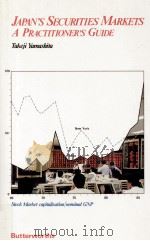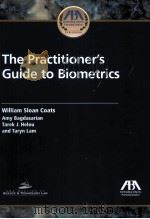《POLICE MANAGEMENT FOR THE 1990S A PRACTITIONER'S ROAD MAP》
| 作者 | BY JOHN BIZZACK 编者 |
|---|---|
| 出版 | 未查询到或未知 |
| 参考页数 | 154 |
| 出版时间 | 没有确切时间的资料 目录预览 |
| ISBN号 | 0398055831 — 求助条款 |
| PDF编号 | 811867408(仅供预览,未存储实际文件) |
| 求助格式 | 扫描PDF(若分多册发行,每次仅能受理1册) |

Chapter 1 EVOLUTION AND INFLUENCES ON POLICE ORGANIZATION CULTURE3
Historical Perspectives4
A New Era Emerges6
Chapter 2 CHANGE AND THE NEW ERA OF POLICE MANAGEMENT11
Organizational Cultures14
Leadership Development16
Understanding True Professionalism and the Desire for Recognition18
Chapter 3 CHALLENGING THE FOUNDATIONS OF POLICE ORGANIZATION... A LOOK AT THE FUTURE23
Basic Philosophies of Police Service24
Predictions and Forecasts25
Society's Crime Warps26
Forecasts for Police Service28
Chapter 4 A PRACTITIONER'S ROAD MAP FOR THE FUTURE35
Essential Areas of Change: The Legend35
Using the Map37
A More Productive Detective38
Images and Myths38
Work Loads39
Solvability Factors40
Case Assignment Management42
Police and the Media: Conflicts, Influences, and Dialogue44
The Evolution of the Relationship45
Print Media and Broadcast Journalism46
Knowing the Local Media50
Public Information Officers51
Expanding the Relationships52
Informal Police-Media Meetings53
Community Involvement in Crime Solving-Crime Stoppers55
Role of the Media56
Program Organization for Success57
Drug Enforcement and Education Strategies59
The Influence of Drug Availability and the Vicious Cycle of Enforcement Strategies60
Element A: Nine Drug Enforcement Strategy Principles63
Measurable Goals and Objectives64
Full-Time Attention65
Asset Forfeitures66
Reporting-Community and Officers68
Inclusion of Uniformed Officers in the Strategy69
Drug Detection Animals71
Clear Responsibilities for the Drug Enforcement Officer73
Federal Funding73
Visability and Coordination with the Media74
Element B: Drug Education and Awareness Strategy75
Past Strategy Concept and Their Failures75
Project DARE76
The Necessary Commitment from the Police78
Victims in the Criminal Justice System79
The Necessity of a More Focused Attention79
Laws Governing Victims' Rights80
The Police Role80
Hostage Negotiations and Tactical Incident Management81
The Evolution of the Need82
Consideration of Forecasts and Predictions83
Rethinking the Concept83
Setting a Futuristic Management Tone for the 1990s85
Blending Modern Management Science with Police Management86
The Organizational Autopsy88
Leadership Ethics89
Six Fatal Flaws of Police Management90
Maintaining a Sense of the Outside World90
Wanting to be Liked-Not Respected91
Failure to Make Problems Line Up91
People Problems vs. Technical Problems92
Keeping Abreast of Developments in the System92
Avoiding the Search for an Easy Answer93
.Politics and Police Leadership94
The Relationship94
Political Responsibilities95
Political Appointments96
Bases for Compensation97
Adverse Reactions from Police Service97
The Cost of Policing98
Compensation Planning that Makes Sense100
Career Ladders101
Interagency Politics102
Basic Strategies used by the Interagency Politician103
Five Principles of Destructive Political Activity105
Curbing Political Practitioners105
Community Policing: A Mature Vision106
Components of Community Policing107
The Benefits of Community Policing for Police Service109
Accentuating Community Understanding110
Measuring Productivity and the Reward Structure113
The Uniform Crime Report114
The True Worth of the Crime Index as a Measurement115
The Inclusion of a Nonenforcement Gauge116
Officer Health, Stress, and Cost Effectiveness117
The Financial Investment in Police Officers and Career Survival117
Mandatory Program Principles118
The Liabilities of No Program118
Fiscal Planning: New Directions and Tactics119
Fundamental Principles of Fiscal Planning120
The Inclusion of Agency Members in Fiscal Planning120
External Funding Resources121
National Accreditation for Police Service122
The Concept and Accreditation Commission123
Standards Development, Scope and Applicability of Standards124
The Process and Procedure for Accreditation125
The Value of the Accreditation Tool125
The Echoing Effects of Society's Attitudes128
Factors Affecting the Crime Rate129
The Impact of Society's Attitudes about Crime and Police129
Chapter 5 ARCHITECTURAL ADJUSTMENTS135
The Sinking of the Island Mentality135
Vision vs. Reaction136
Breaking with Tradition136
Challenges Unrelated to Crime137
Chapter 6 A DISTINCTIVE LEADERSHIP, A DISTINCTIVE PROFESSION139
Leadership Development139
Taking a Stand on Organization Practices141
The Calls for Professionalism142
A Final Note on Leadership143
Afterword147
Index149
《POLICE MANAGEMENT FOR THE 1990S A PRACTITIONER'S ROAD MAP》由于是年代较久的资料都绝版了,几乎不可能购买到实物。如果大家为了学习确实需要,可向博主求助其电子版PDF文件。对合法合规的求助,我会当即受理并将下载地址发送给你。
高度相关资料
-

- Japan's securities markets : a practitioner's guid
- 1989 Butterworths
-

- A MANAGER'S GUIDE TO INTERNATIONAL ROAD FREIGHTING
- 1986 COPYRIGHT
-

- Geriatrics for the practitioner
- 1981 Excerpa Medica
-

- EC COMPETITION LAW A PRACTITIONER'S TEXTBOOK
- 1980 NORTH-HOLLAND PUBLISHING COMPANY
-

- SOFTWARE ENGINEERING A PRACTITIONER'S APPROACH FOURTH EDITION
- 1997 MCGRAW-HILL
-

- STUDYING ENGINEERING A ROAD MAP TO A REWARDING CAREER
- 1995 DISCOVERY PRESS
-

- THE ZONE A DIETARY ROAD MAP
- 1995 REGAN BOOKS
-

- THE WORKER'S ROAD TO LEARNING
- 1940 AMERICAN ASSOCIATION FOR ADULT EDUCATION NEW YORK
-

- CRISIS INTERVENTION BOOK 2 THE PRACTITIONER'S SOURCEBOOK FOR BRIEF THERAPY
- 1990 FAMILY SERVICE AMERICA
-

- CHARTING NURSING'S FUTURE AGENDA FOR THE 1990S
- 1992 J.B.LIPPINCOTT COMPANY
提示:百度云已更名为百度网盘(百度盘),天翼云盘、微盘下载地址……暂未提供。➥ PDF文字可复制化或转WORD




